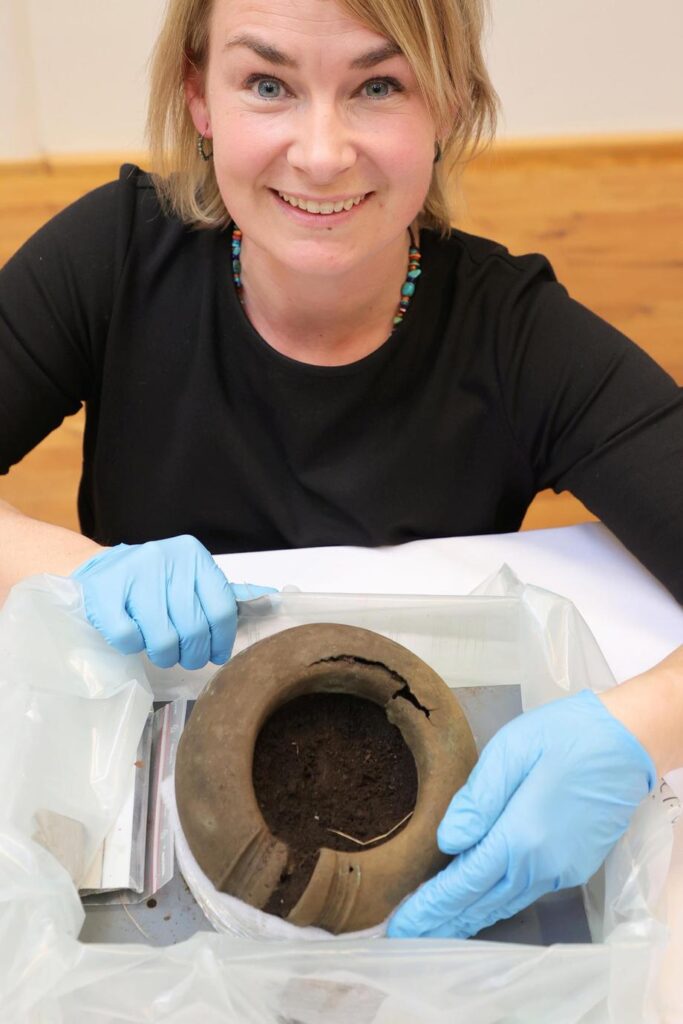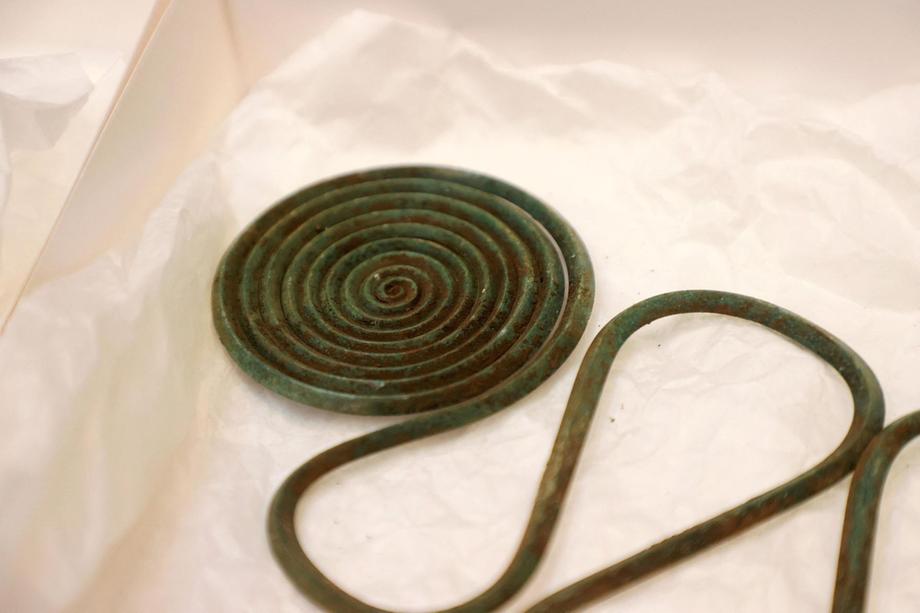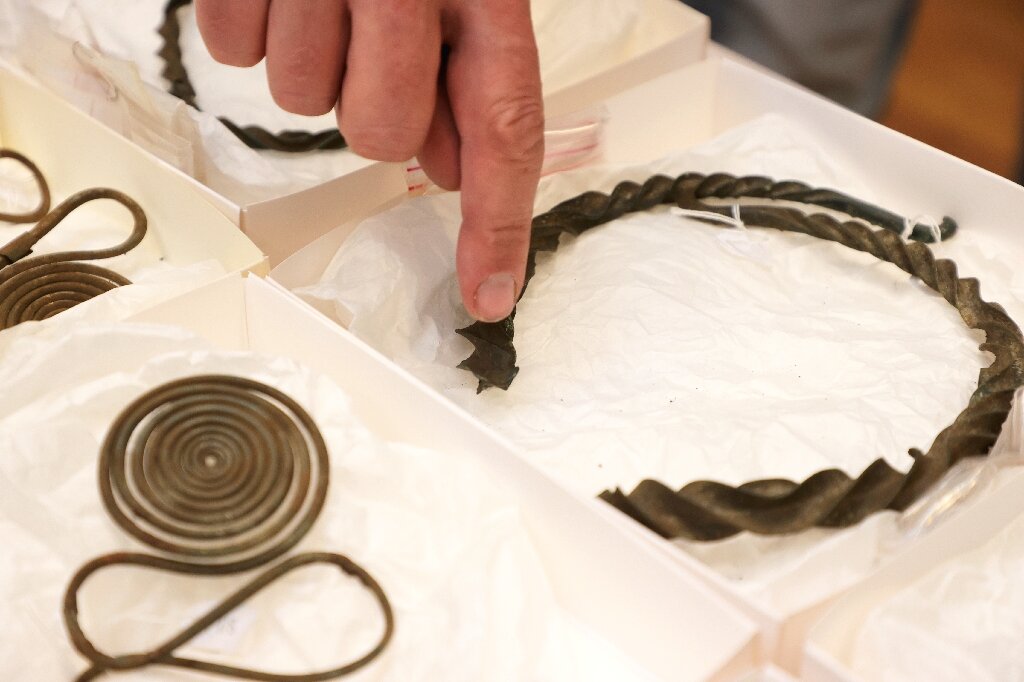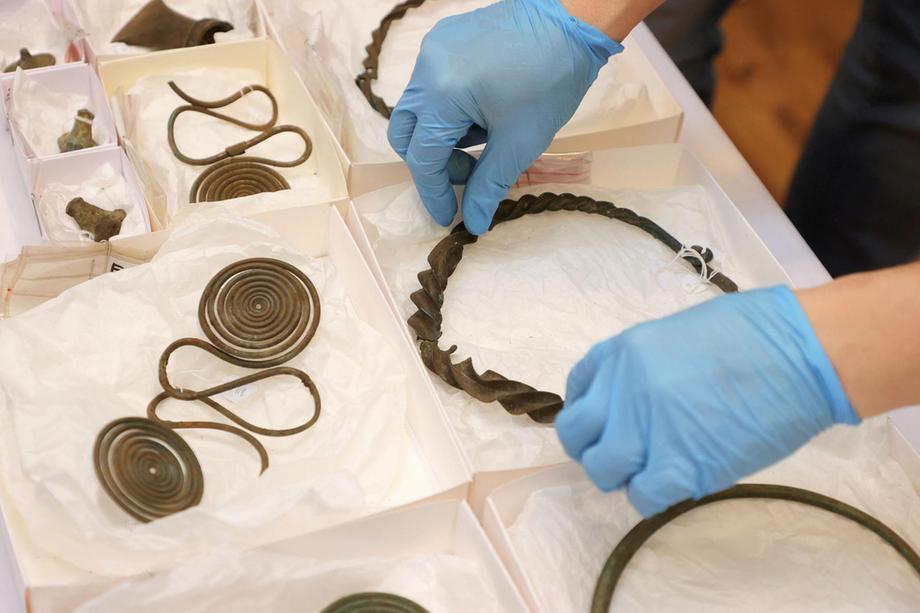A man stumbles across a 2,500-year-old Bronze Age treasure trove in Swedish forest – in pictures
The AFP reports that more than 50 Bronze Age artefacts were discovered in western Sweden by Tomas Karlsson, an orienteering enthusiast. The 2,500-year-old cache of bronze items includes necklaces, chains, needles, and eyelets used to decorate and construct clothing.

Among the relics, believed to be from the period between 750 and 500 BC, are some “very well preserved necklaces, chains and needles” made out of bronze.
The objects were lying out in the open in front of some boulders out in the forest.
“Presumably animals have dug them out of a crevice between the boulders, where you can assume that they had been lying before,” the government agency said.
Tomas Karlsson, the cartographer who made the discovery when he was out updating a map, at first thought, it was just junk.
“It looked like metal garbage. Is that a lamp lying here, I thought at first,” Karlsson told the Dagens Nyheter newspaper.
He told the paper he then hunched over and saw a spiral and a necklace.
“But it all looked so new. I thought they were fake,” he continued.
He reported the find to local authorities who sent out a team of archaeologists to examine the site.
“Most of the finds are made up of bronze items that can be associated with women of high status from the Bronze Age,” Johan Ling, professor of archaeology at the University of Gothenburg, said in the statement.
“They have been used to adorn different body parts, such as necklaces, bracelets and ankle bracelets, but there were also large needles and eyelets used to decorate and hold up different pieces of clothing, probably made of wool,” Ling added.








